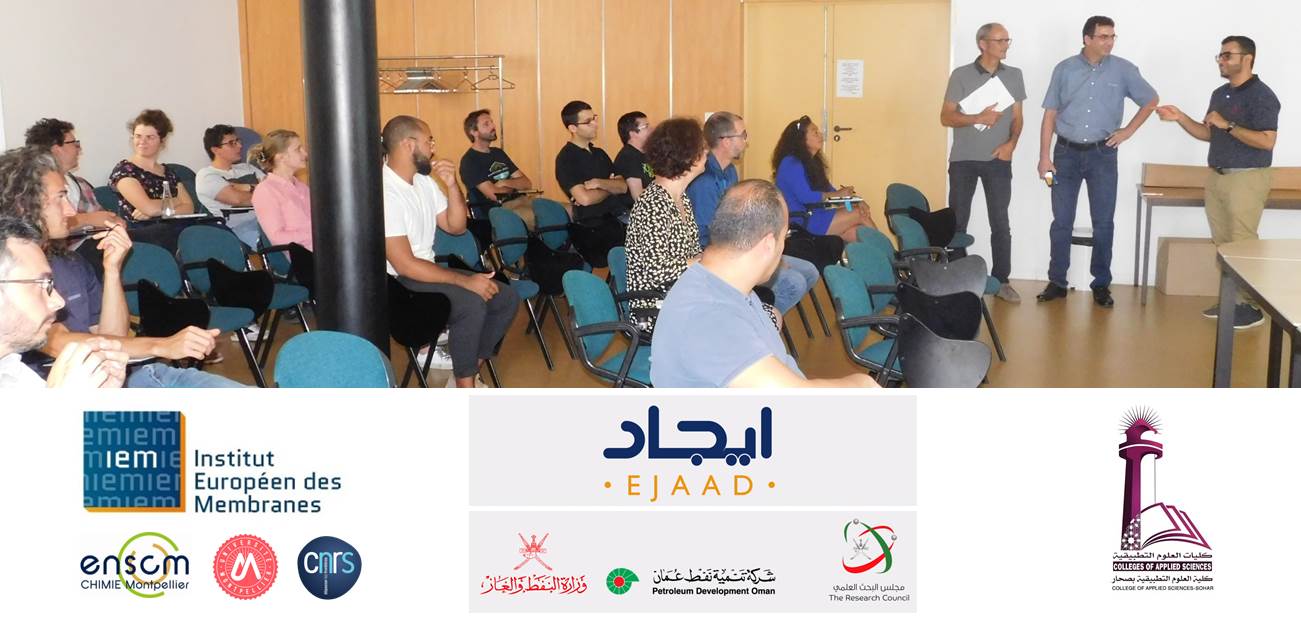
L’IEM a reçu une délégation du Sultanat d’Oman (Department of Engineering, College of Sciences, Sohar) le 19 juin 2019.
Deux conférences sont programmées à partir de 14h30 :
Dr. Ilyes Jedidi
Department of Engineering, College of applied sciences, Suhar, North Al Batinah, Oman
Email: ilyesjedidi.soh@cas.edu.om
« Development of Carbon membranes and carbon/CNT membranes for wastewater treatment »
Carbon membranes are known for their excellent behavior in gas separation but also in liquid separation especially for water-oil emulsions (due to their hydrophobic character) and in corrosive solutions purification such as industrial acids purification such as Phosphoric acid due to their excellent chemical inertia. Carbon membranes are mostly prepared by carbonizing at a temperature varying from 600°C to 900°C under inert atmosphere a shaped green body made of an organic precursor. The result is a porous carbon membrane where carbon is in vitreous state.
In a previous work, a process was developed to prepare carbon membranes consisted in a new and easy approach to prepare carbon MF and UF membranes. These membranes were prepared by extruding a green body or a paste made of a mixture of mineral coal or graphite powder, porogen compounds and a solution of phenolic resin/ethanol. A carbonization at 700℃ under inert atmosphere is needed to obtain the final porous structure. These membranes showed very promising results when applied to the treatment of wastewater by filtration and by electrofenton-baromembranar filtration coupled process.
Adding a carbon nanotubes growth catalyzing agent to the steps of preparation of these carbon membranes allowed us to grow CNT’s and iron nanoparticles inside the porosity of the material. The CNT’s grew also on the external surface of the material which resulted in a MF and UF layers with vertically grown CNT’s on top of them (figue.1). Such structure is suspected to have very good results in fooling reduction and electrofenton (since the conductivity had a spectacular increase).
When tested as adsorbent on synthetic aqueous solutions of humic acid, we witnessed the spectacular effect that can have CNT’s to enhance significantly the adsorption capacity of the material .
Using diluted solution of Phenolic resin/Ethanol, we were able to deposit, by slip casting, a thin nanofiltration layer and tailor its average pore size within 1 to 2 nm by varying the thermal treatment conditions. The layer had a thickness less than 1 nanometer and the carbon structure of the layer was graphene-like according to the TEM analysis.
Dr. Mohamed Al-Saidi
Department of Engineering, College of applied sciences, Suhar, North Al Batinah, Oman
Email: mohammed.alsaidi.soh@cas.edu.om
“Research Potential and opportunities in Oman”
The presentation will talk about the research potentials in Oman in regard to field of interest and investments of research trends. It may give an overview about the available tools and resources of research and will explore the possible membrane technology applications in the Omani operation environment. The aim of the talk is to discuss the potential of future cooperation and joint researches in the field of membranes form application point of view.








